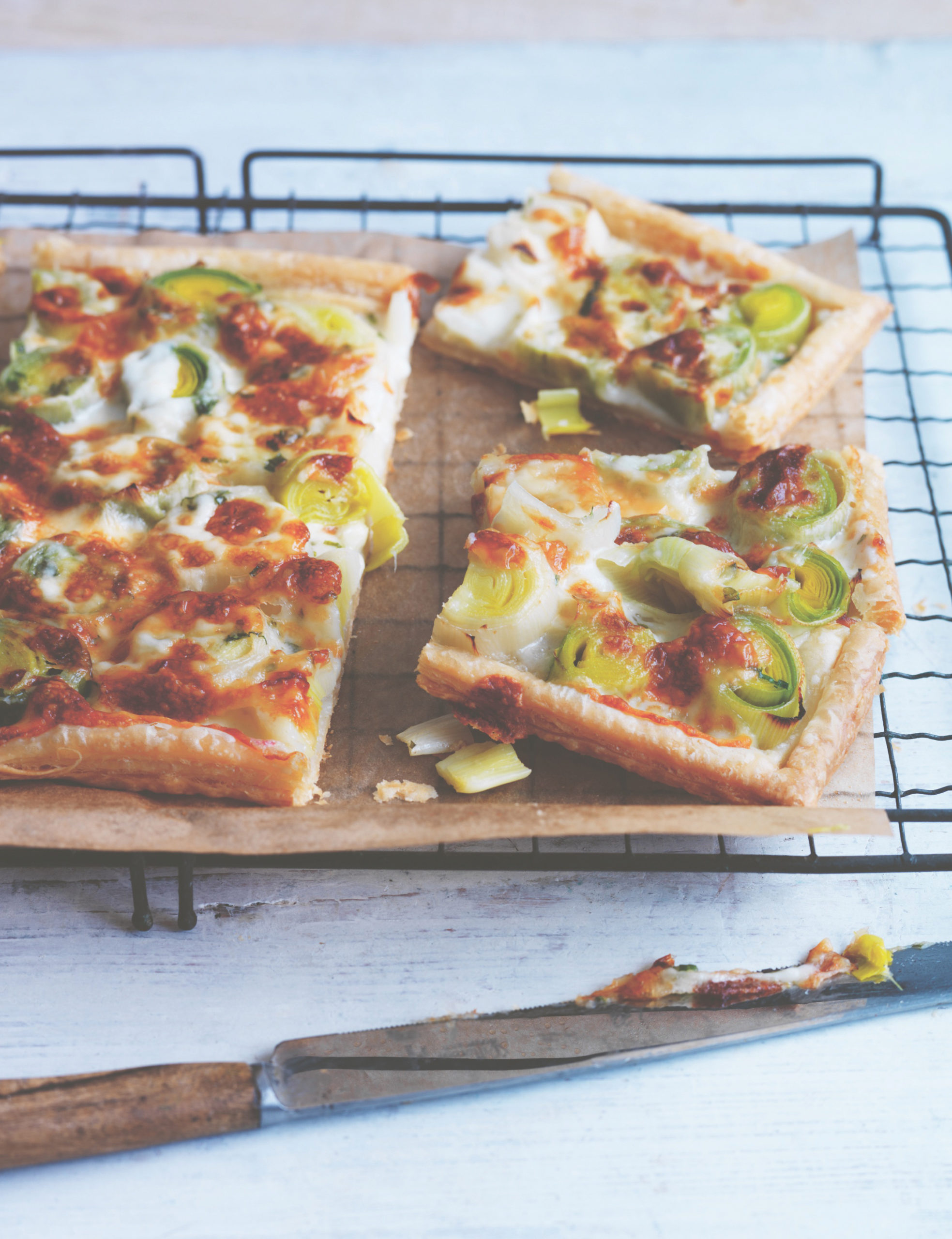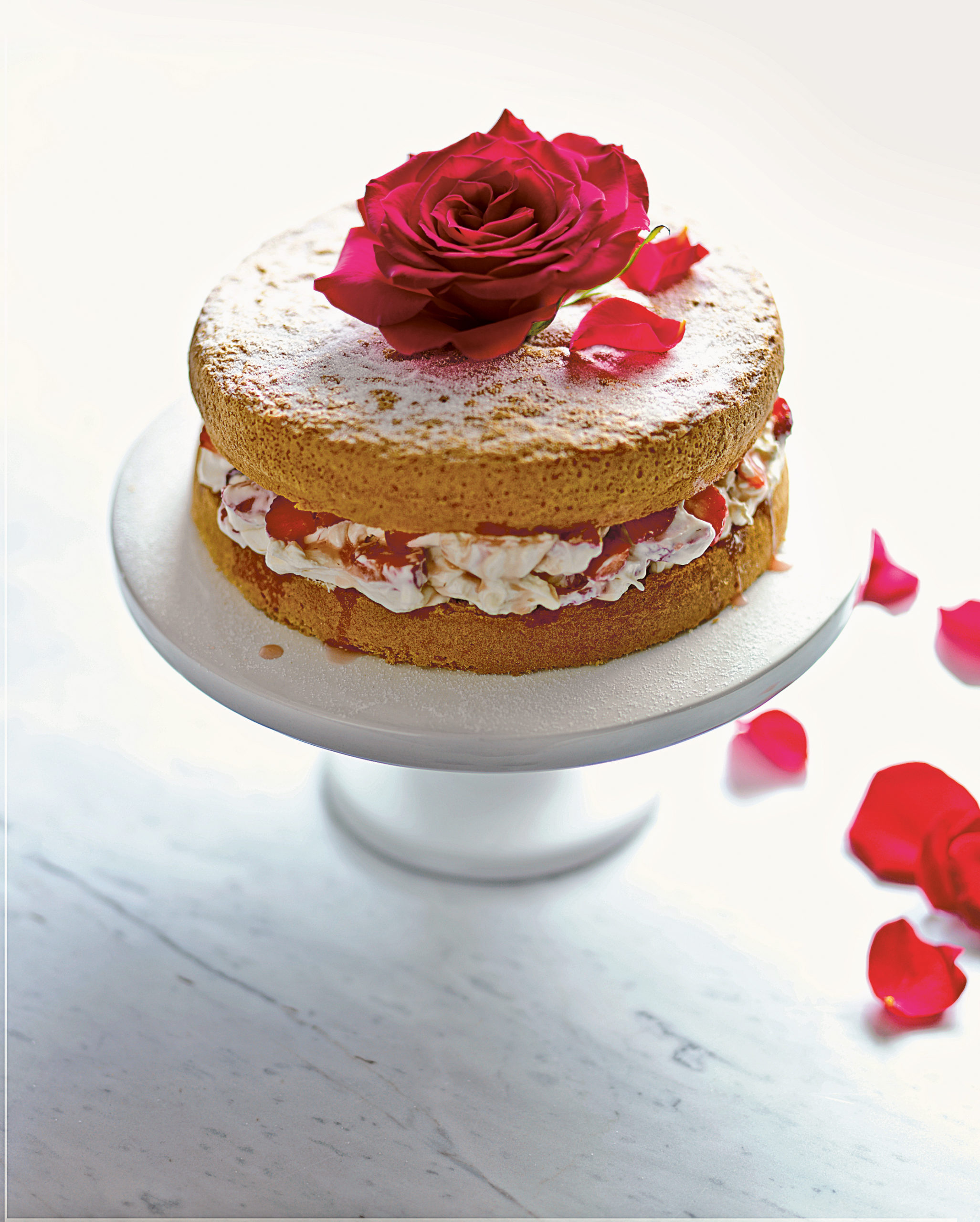We’ve cooked up a sneaky slice of The National Trust Book of Baking by Sybil Kapoor, which is out on 15th April, with these heart-warming spring recipes.
Easy leek tart

Ingredients:
• 225g/8oz puff pastry (see below if making fresh)
• 680g/11⁄2 lb untrimmed leeks
• 1⁄2 tablespoon chopped fresh tarragon
• salt and freshly ground black pepper
• 225g/8oz taleggio cheese
For the puff pastry
• 225g/8oz plain flour pinch of salt
• 225g/8oz cold butter about 120ml/4fl oz cold water
PREP: 15 minutes & 30 minutes rest time
COOKING: 25 minutes
SERVES: 6
Method:
1 On a lightly floured surface, roll out the pastry into a large rectangle about 3mm/1⁄8 in thick. Using a 20 x 30cm/8 x 12in Swiss roll tin as a giant pastry cutter, cut out a rectangle of that size. If you are using homemade puff pastry there will be quite
a lot of leftover pastry, so carefully fold up the trimmings and freeze. Take a sharp knife and lightly run it about 1cm/1⁄2 in inside the pastry edge, so that you score a line to create a rim for the tart. Prick the internal rectangle with a fork. Place on a non-stick baking sheet and chill for 30 minutes. Preheat the oven to fan 200°C/gas 7.
2 Trim the leeks of their roots and darker green leaves. Remove the tough outer leaves then slice lengthways through the green- coloured section of leaves. Wash thoroughly in a sink of cold water. Bring a pan of water to the boil. Add the leeks, return to the boil and cook briskly for 5 minutes or until just tender. Drain and cool under the cold tap. Squeeze out the excess water and pat dry on kitchen paper.
3 Slice the leeks and spread them over the pastry, taking care not to cover the rim. Scatter with the chopped tarragon and lightly season. Remove the rind from the cheese and slice or break into pieces. Dot over the filling.
4 Bake for 20 minutes or until the pastry is crisp and the cheese is bubbling and flecked gold.
Puff Pastry:
The pastry itself doesn’t take long to make, but it needs to be rested regularly in between rollings. The chilling times are the minimum period of time you should leave the dough, but you can leave it several hours if you like.
1 Mix together the flour and salt in a food processor. Cut 30g/1oz of the cold butter into small dice, add to the flour and whiz until it forms fine crumbs. Tip into a bowl and mix in enough cold water to form a rough dough. Lightly knead into a ball, wrap and chill for 30 minutes. Return the remaining butter to the fridge.
2 Fifteen minutes before you are ready to roll, take the remaining 200g/7oz butter out of the fridge and let it soften slightly. Place the butter between two sheets of greaseproof paper or baking parchment and use a rolling pin to flatten it into a 2.5cm/1in thick rectangle.
3 On a floured work surface, roll out the dough into a rectangle that is three times the length of the butter and about 2.5cm/1in wider than the butter. Place the butter in the centre of the dough and then fold over the top and bottom flaps of dough, so that the butter is completely covered. Using the rolling pin, lightly press down on each edge so that the butter is sealed in. Give the dough a half-turn clockwise.
4 Using short sharp strokes, roll out the dough so that it returns to its original length (three times that of the butter) but retains the same thickness. Then fold in the top and bottom ends, press the edges with the rolling pin and give a further half-turn clockwise. If the butter is breaking through the pastry or the pastry is becoming warm, stop, wrap and chill for 30 minutes. If not, you can repeat the rolling process one more time before resting the dough. Make a note of which way the dough is facing before chilling, as you will need to continue with the clockwise half-turns.
5 After 30 minutes’ chilling, replace the pastry on the floured surface in the position that you left off and continue with a further two rolls and half-turns. Chill for another 30 minutes and then make two more rolls and half-turns. Wrap and chill until needed or cut in half and freeze.
Strawberry cream cake
Ingredients:
Whisked sponge
• 85g/3oz caster sugar, plus extra for dusting
• 85g/3oz plain flour, sifted, plus extra for dusting
• pinch of salt
• 3 medium eggs
Strawberry filling
• 310g/11oz strawberries 1 tablespoon kirsch
• 2 tablespoons caster sugar 225ml/8fl oz double cream

PREP: 15 minutes
COOKING: 20 minutes
SERVES: 8
This cake is the picture of summer if you place a freshly opened rose on its sugary top. Perfect for June birthdays. As it is a whisked sponge, and contains no fat, it is best eaten on the day it’s baked. The sponge freezes well and makes a wonderful trifle.
Method:
1 Preheat the oven to fan 170°C/gas 4. Lightly oil two 18cm/7in cake tins. Line the base of each with baking parchment and lightly oil. Dust the sides of each tin with caster sugar and then with flour.
2 Sift the flour and salt together and set aside. Place the eggs and sugar in a large bowl. If you have an electric whisk, beat until the mixture is pale and thick and leaves a trail when you lift the whisk. If you’re whisking by hand, place the bowl over a pan of just-boiled water (off the heat); whisk until it is pale and thick, then remove from the pan and continue to whisk until cool.
3 Tip the flour over the surface of the whisked egg mixture and, using a flat metal spoon, gently fold the flour into the mixture. Divide between the two tins and bake for 20 minutes or until golden. Test by lightly pressing the cake with your fingertip: it will spring back if cooked.
4 Leave the cakes in their tins on a wire rack for 5 minutes. Turn out the cakes and peel off the baking paper. Dust the top of one cake (baked-side up) with caster sugar. Leave until cold.
5 Meanwhile, hull, halve and slice the strawberries. Toss with the kirsch and 2 tablespoons caster sugar.
6 Once the cakes are cold, whip the cream until it forms soft peaks. Fold in the strawberry mixture. Spread over the bottom sponge, leaving a clear edge for the cream to squeeze into when you
add the top. Gently squash on the sugared top and add a further dusting of caster sugar.







